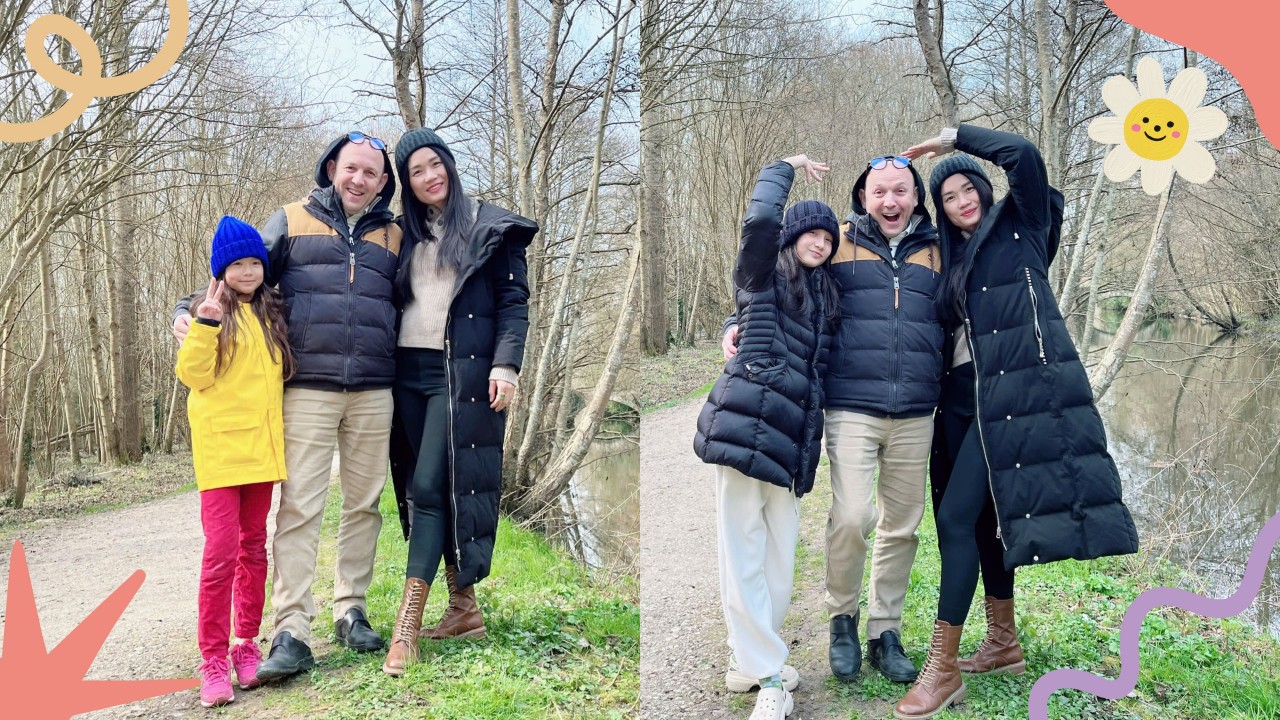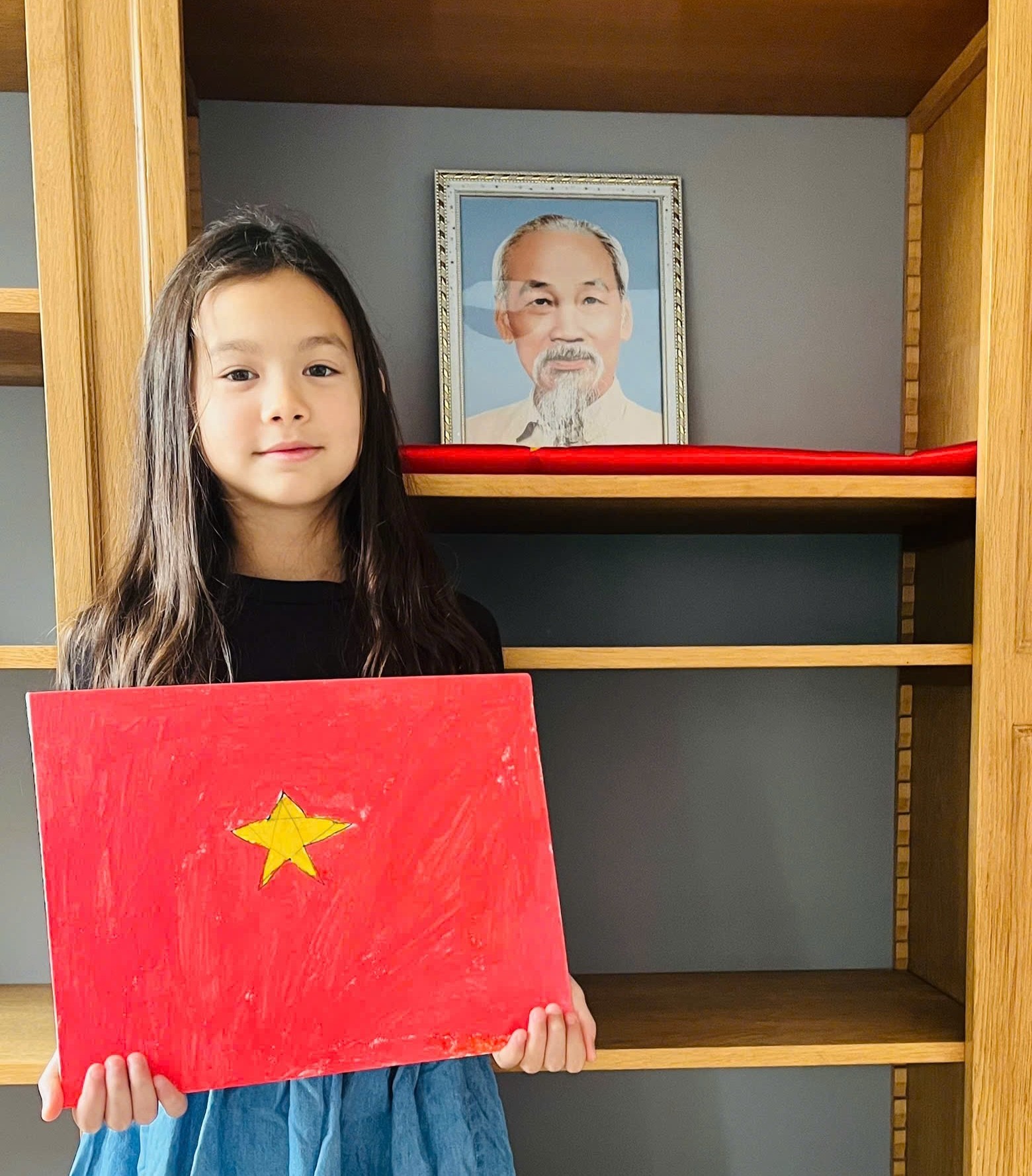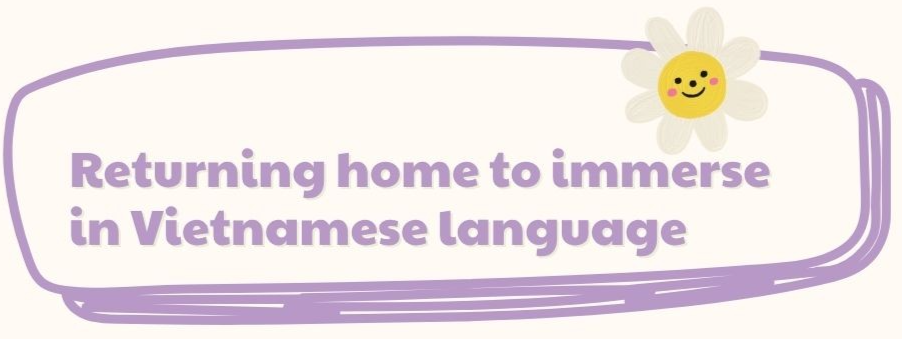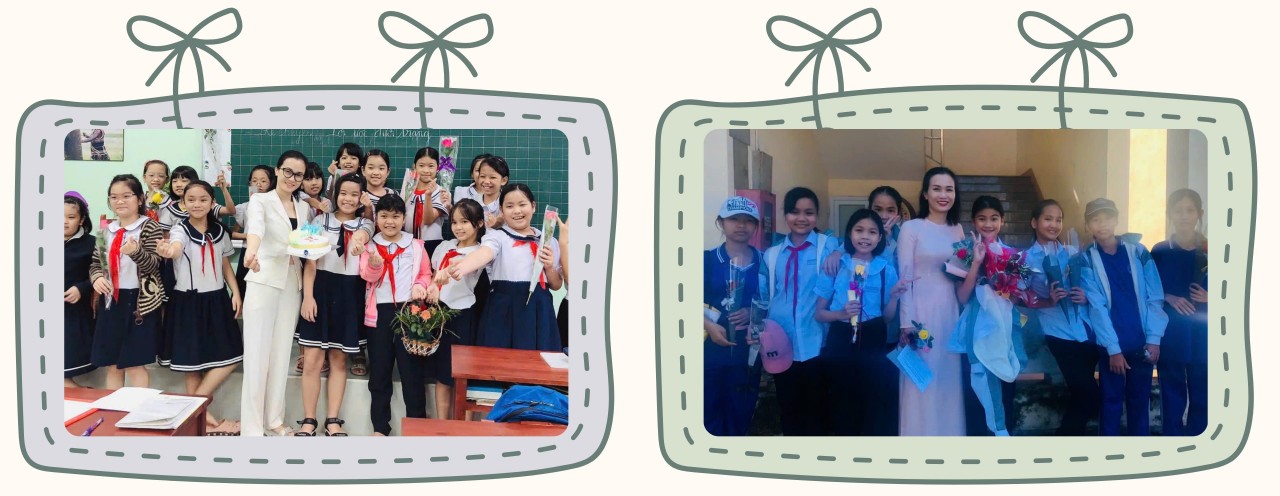From Chartres (France), Teaching Children to Speak Their Mother Tongue
November 05, 2025 | 10:59
In the ancient city of Chartres, just over an hour’s drive from Paris, Hoang Thi Nhi, a woman from Quang Tri Province, Vietnam, faithfully teaches her two children to speak Vietnamese, read Vietnamese books, and sing Vietnamese children’s songs. Nhi shared that preserving the Vietnamese language for her children is not a “task,” but a small daily joy. “As long as Vietnamese is spoken in our home, I feel that my homeland is still very close.”
|
“The country within our home
Is it mother, is it father,
Is it the National Flag?
…
The poem I can recite,
The essay I can write,
The gentle Vietnamese tongue
Is that the country itself?”
It was an early autumn afternoon in the city of Chartres. Inside a house in the city center, the clear and warm voice of Maria Hoang-Nhi’s younger daughter, filled the room as she recited the poem, bringing a sense of warmth to the space. At nine years old, for Maria to read the poem “What Is the Country?” so fluently, she and her mother had gone through a long journey of effort and dedication.
|
| Not only Maria Hoang, but her older sister, Christina Kim (11 years old), can also read, write, and converse in her mother’s native Vietnamese, speak her father’s French fluently, and has even learned an additional language. |
|
Beyond the living room - the family’s common space - lies the neatly arranged study corner of Christina and Maria, carefully organized by their mother. On the desk sit sets of Vietnamese primary school textbooks that Nhi brought from Vietnam, all carefully wrapped. Each year when she returns to visit her hometown, she brings back almost the entire set of books for the elementary curriculum.
“In France, children only go to school four days a week, so I set aside Wednesdays and Saturdays for my daughters to learn Vietnamese and Math,” she shared. Their lessons are simple: the mother teaches, the daughters write, and sometimes they watch Vietnamese fairy-tale cartoons as a fun way to learn. Whenever Christina or Maria mispronounces a word, Nhi patiently corrects each tone and sound. “French doesn’t have tone marks like Vietnamese, so my daughters often drop the tones when speaking,” she explained.
|
 |
| The Vietnamese bookshelf that Nhi brought from Vietnam serves as a learning resource for her two daughters. |
|
When her daughters stumble over difficult Sino-Vietnamese words, Nhi looks for pictures or real-life examples to help them remember more easily. “I tell my girls that whenever they come across a word they don’t understand, they should write it down. I’ll explain it and find an image to make it clearer,” she said. She also connects them with friends in Vietnam through online exchanges, where they play games and chat in Vietnamese.
Sometimes, she “encourages” them to study with small rewards - a favorite toy or a weekend outing. Christina earned a treat for completing a full essay describing an animal, while Maria was rewarded for singing an entire song in Vietnamese. “Children love being praised, so I try to make learning Vietnamese a joy, not a pressure,” she shared.
|
| A picture of the national flag drawn by Maria Hoang. |
| “In France, I learn French to integrate into society, but at home, I choose to speak entirely in Vietnamese with my children. They’ve heard my Quang Tri accent since they were little, so I’ve kept it that way, so they’ll recognize it as the sound of home,” Nhi shared. |
|
“Con mời mẹ ăn cơm ạ!” (“Mom, please have your meal!”) - that familiar phrase echoes through the daily life of Nhi and her husband, Eric.
Nhi added that although Vietnamese ingredients are not easy to find in France, she still makes regular trips to Asian markets to prepare authentic Vietnamese meals. “A proper Vietnamese meal needs a bowl of sour soup, a plate of boiled vegetables, and fish sauce with garlic and chili. During meals, my daughters invite everyone to eat, say ‘dạ’ and ‘thưa’ to show respect, and hand things to elders with both hands. I want them to understand that Vietnamese culture lives in every word they speak and every small gesture they make.”
|
| Christina Kim and Maria Hoang learn to make banh loc with their aunt. |
| When Lunar New Year arrives, the small home once again fills with the festive spirit of Vietnam. The mother and her two daughters make paper peach blossoms by hand, buy yellow flowers, and prepare an ancestral offering tray. “I want my children to feel the Tet atmosphere just like in our homeland,” Nhi said. “When we return to Vietnam for Tet, I take them to Quang Tri, where they join their grandparents in wrapping bánh chưng, tidying the altar, and lighting incense. They love it and keep asking why Vietnamese people make offerings on New Year’s Eve.” |
| Christina Kim and Maria Hoang color and decorate conical hats. |
| For the Mid-Autumn Festival, Nhi takes her daughters to an Asian store to buy mooncakes, then sets up a small feast at home. Together, they enjoy the treats while she tells them stories of Chu Cuoi and Chi Hang. On major national holidays such as September 2 (National Day) or April 30 (Reunification Day), the family hangs the national flag and sings the anthem. “I tell my children the meaning of these days so they can feel proud of their country,” she said. |
| Hoang Thi Nhi was born and raised in Quang Tri and used to be a literature teacher in the coastal city of Da Nang. Her husband, Eric, is French and works in information technology. “We had wonderful years living in Vietnam,” she recalled. “But when the COVID-19 pandemic hit, my husband’s work was affected. In 2020, we decided to return to France so he could have a more stable job.” |
| Hoang Thi Nhi with her students while teaching in Da Nang. |
|
The family settled in Chartres, a peaceful city in northern France known for its magnificent Chartres Cathedral. Nhi is currently pursuing a Master’s degree in Education (Master MEEF) at INSPÉ Centre-Val de Loire while caring for her two daughters.
Although she has not yet taught in any official Vietnamese language classes for children, she has tutored the children of several Vietnamese families. “I’ve noticed that many parents are busy and have little time to speak Vietnamese with their kids. Children born in France can easily forget their mother tongue if they don’t hear it often. In my view, teaching Vietnamese should start with listening - children need to hear it a lot before they can speak and read it,” she shared.
Her husband, Eric, has always supported her. Having studied Vietnamese while living in Da Nang, he understands that the language is not only difficult but also beautiful, rich in regional tones and expressions. “He often says Vietnamese families have a special sense of closeness and care for one another, something less common in French culture,” she said. “I’ve never felt discouraged about teaching my children Vietnamese. We often remind each other that learning the language is so they can speak with their grandparents, aunts, and uncles when we return home, and never feel like strangers.”
|
 |
| Nhi’s husband’s family during a reunion in France. |
| Every year, Nhi and her daughters return to Vietnam once or twice. These trips are not only family visits but also opportunities for the girls to “bathe” in the Vietnamese language to listen, speak, and experience life in their homeland. “In Vietnam, they talk to their grandparents and friends and realize that their Vietnamese is useful,” Nhi said. “When we return to France, they always tell me: ‘Mom, let’s go back to Vietnam again next year.’” |
| Christina Kim and Maria Hoang during their trips back to Vietnam. |
|
In the future, Nhi hopes to maintain her daughters’ habit of using Vietnamese every day, through watching films, reading books, telling folktales, and regularly visiting their homeland. She also hopes to connect with the local Vietnamese community so her children can both learn and naturally nurture their love for their roots.
For Hoang Thi Nhi, preserving Vietnamese for her children is not a “duty” but a small daily joy. “As long as Vietnamese is spoken in our home, I feel that my homeland is still very close,” she said.
|
|
Written by: Thanh Luan
Designed by: Mai Anh
Published on: November 11, 2025
|
Thanh Luan












